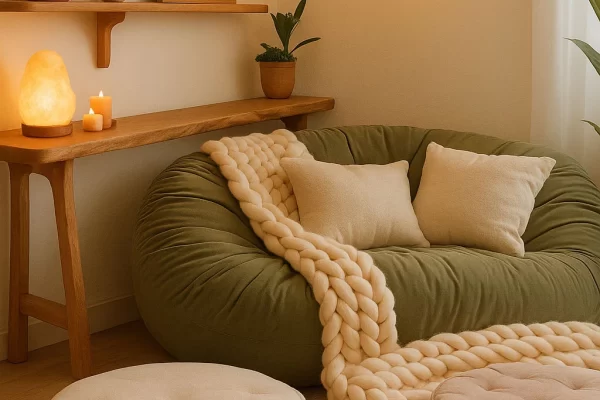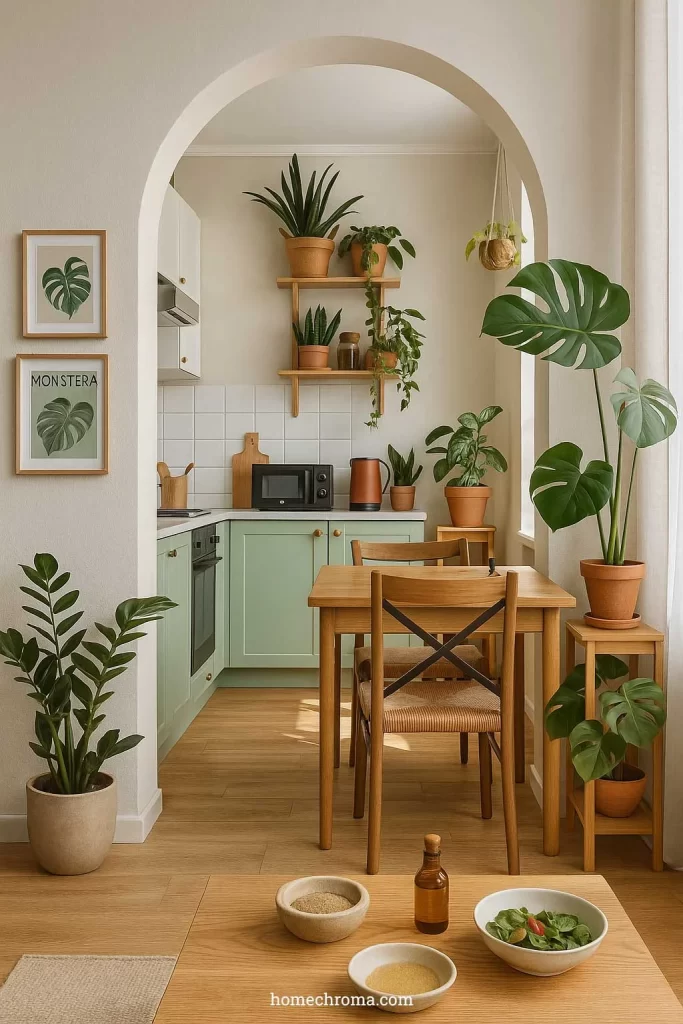
In our fast-paced modern world, your home should be more than just a place to sleep and eat—it should be a sanctuary that nurtures your well-being. This is where biophilic design comes in. Far beyond simply placing a few plants around your house, biophilic design is about creating a deeply immersive connection with nature that can transform your physical and mental health.
What Is Biophilia and Why Does It Matter?
Biophilia, a term coined by biologist Edward O. Wilson in the 1980s, refers to humans’ innate affinity for nature and living organisms. This connection isn’t just a preference—it’s hardwired into our DNA. For 99.9% of human history, our ancestors lived in close contact with natural environments, and our bodies and minds remain adapted to these settings.
The disconnect between our evolutionary programming and modern indoor lifestyles contributes to many health problems we face today. Bringing nature back into our homes through biophilic design isn’t just about aesthetics—it’s about realigning our living spaces with our biological needs.
The Science-Backed Benefits of Biophilic Design
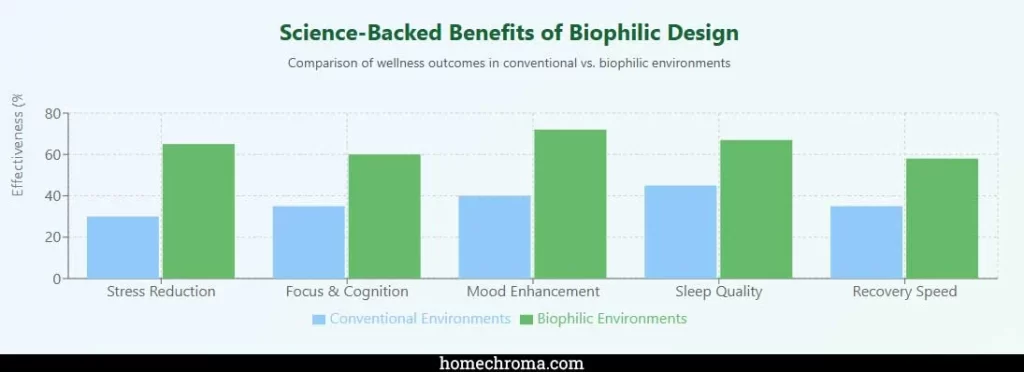
Research consistently shows that incorporating natural elements into indoor spaces delivers measurable health benefits:
- Stress reduction: Lower cortisol levels, heart rate, and blood pressure
- Enhanced cognitive function: Improved concentration, attention, and creativity
- Mood elevation: Increased feelings of calmness, relaxation, and happiness
- Faster healing: Quicker recovery from illness or surgery
- Increased productivity: Greater motivation and emotional satisfaction
“Greenery, window views of nature, and daylight showed the largest positive effects on well-being.”
— Ryan & Browning
One landmark study by Roger Ulrich found that hospital patients with views of nature required less pain medication and recovered faster than those facing brick walls. Harvard researchers have demonstrated that even virtual exposure to nature can significantly lower blood pressure and improve cognitive function.
The Multi-Sensory Approach: Engaging All Five Senses
True immersion in biophilic design means engaging all five senses. Here’s how:
1. Visual Immersion
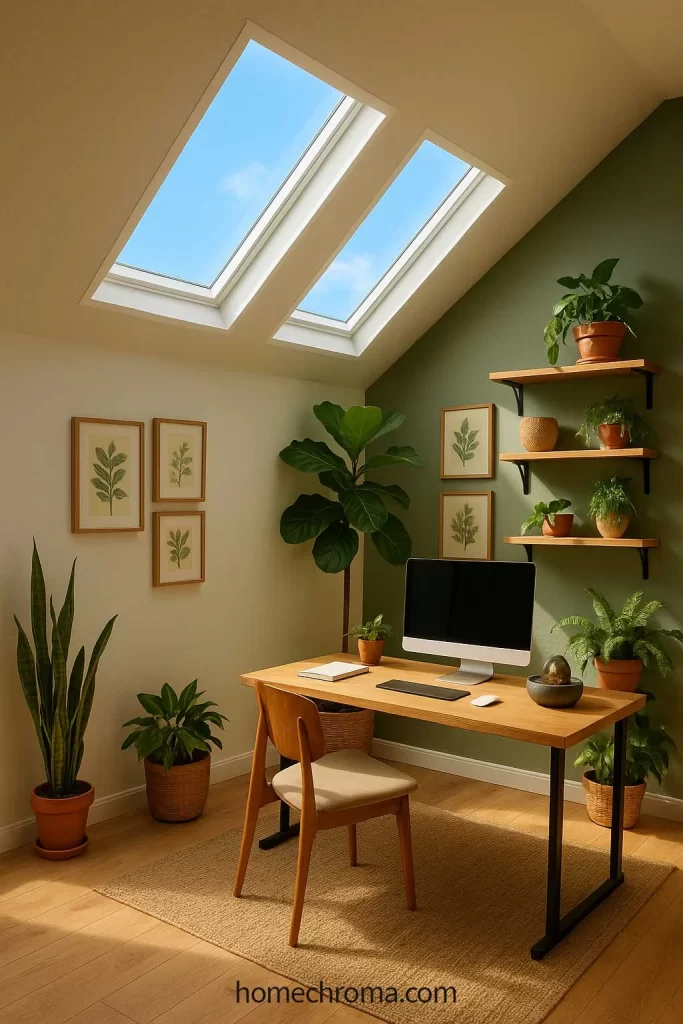
Our visual connection with nature is perhaps the most obvious but remains vitally important:
- Maximize natural light: Optimize window placement, add skylights, use reflective surfaces to bounce daylight throughout your space, and consider circadian lighting systems that mimic natural light patterns
- Create direct and indirect views of nature: Position furniture to maximize window views of gardens or landscapes, add indoor plants and living walls
- Incorporate biomorphic forms: Choose furniture and décor with organic shapes and patterns that mimic those found in nature
- Use nature-inspired artwork: High-quality nature photography or artwork can create powerful connections even in spaces without natural views
2. Auditory Harmony
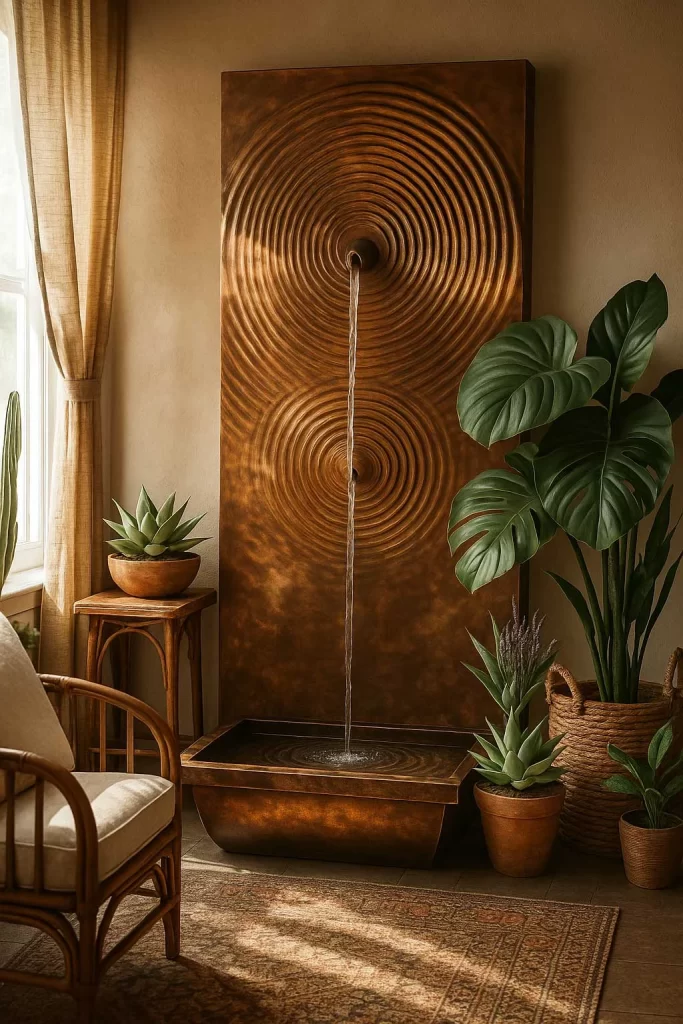
Sound dramatically influences our mood and well-being:
- Integrate natural soundscapes: Add small water features like tabletop fountains for the calming sound of flowing water
- Utilize sound technology: High-quality speakers or dedicated sound machines can play recorded birdsong, rainfall, or forest sounds
- Reduce noise pollution: Use sound-absorbing materials like natural fiber rugs, textile wall hangings, and strategically placed indoor plants to dampen unwanted noise
- Open windows strategically: When possible, allow natural outdoor sounds to enter your home
3. Olfactory Enrichment
Our sense of smell has direct connections to brain regions involved in emotion and memory:
- Use natural fragrances: Essential oil diffusers with lavender, citrus, or pine can reduce stress and enhance mood
- Grow fragrant plants: Herbs, flowers, and other scented plants bring subtle natural aromas into your home
- Enhance ventilation: Good air circulation brings in fresh outdoor scents and improves indoor air quality
4. Tactile Connection
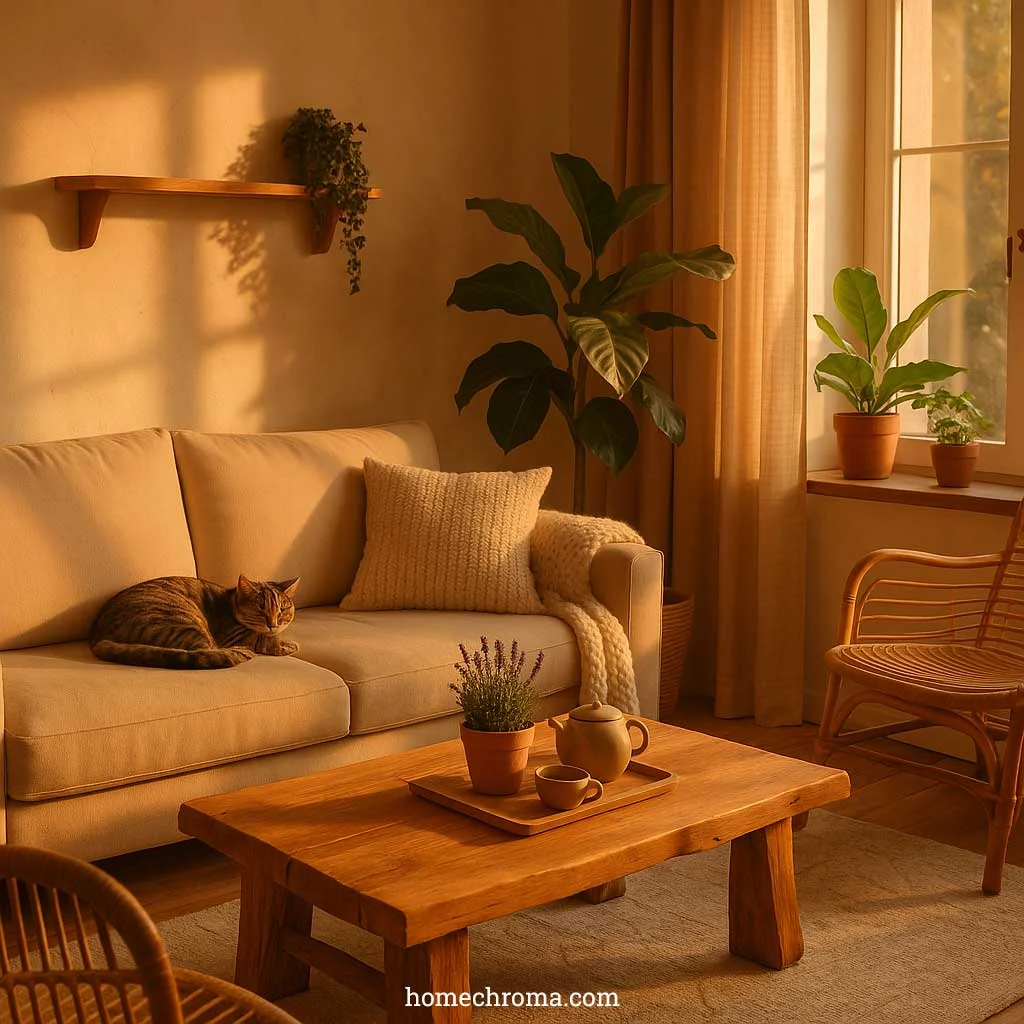
Touch grounds us in our physical environment and creates sensory richness:
- Incorporate natural materials: Wood, stone, bamboo, cork, wool, and linen provide warmth and authenticity
- Vary textures: Mix rough and smooth, soft and hard natural textures in flooring, furniture, textiles, and decorative elements
- Create sensory walls: Dedicated areas with various touchable natural textures provide tactile engagement
- Consider temperature variation: Natural environments have temperature fluctuations that static indoor environments often lack
5. Gustatory Integration

Though often overlooked in design, taste can enhance your biophilic experience:
- Create edible gardens: Grow herbs, microgreens, or small vegetables indoors
- Design eating areas with nature views: Position dining spaces near windows or garden views
- Use natural materials for dining: Wooden tables, stone serving pieces, and ceramic dinnerware connect eating with natural materials
Technology Enhancing Immersive Biophilic Experiences
Modern technology offers powerful tools to extend biophilic experiences beyond physical limitations:
- Virtual and augmented reality: VR can transport you to realistic natural environments like forests or beaches, while AR can overlay virtual natural elements onto your actual home environment
- Advanced soundscape technology: Spatial audio creates three-dimensional natural soundscapes that mimic being outdoors
- Smart aromatherapy systems: Programmable diffusers can create customized scent profiles that change throughout the day
- Circadian lighting: Smart lighting systems adjust color temperature and intensity to match natural daylight patterns, supporting healthy sleep cycles
Research shows these technological biophilic experiences can significantly reduce stress and anxiety while improving cognitive function—even when physical nature access is limited.
Creating Your Immersive Biophilic Home: A Practical Guide
Start with a Sensory Audit
Before making changes, assess your current home environment:
- What natural elements already exist?
- Which sensory experiences are missing?
- Which rooms need the most biophilic enhancement?
Implementation by Room
Living Room
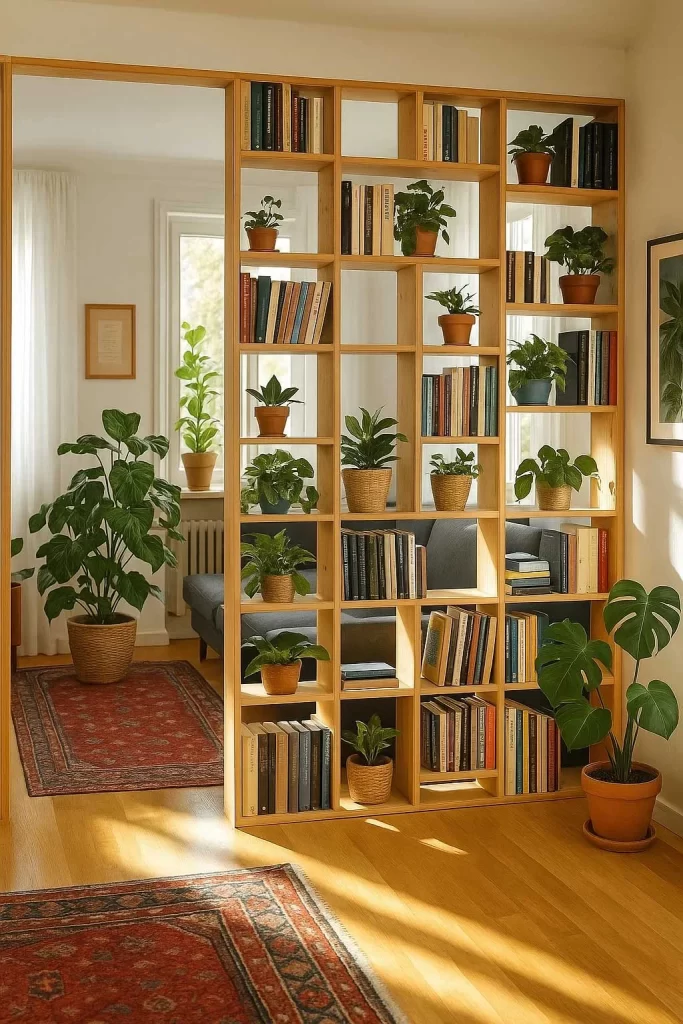
- Position seating to maximize natural views
- Add a variety of indoor plants at different heights
- Incorporate natural materials in furniture and décor
- Install a small water feature for sound
- Use natural fiber rugs and textiles
Bedroom
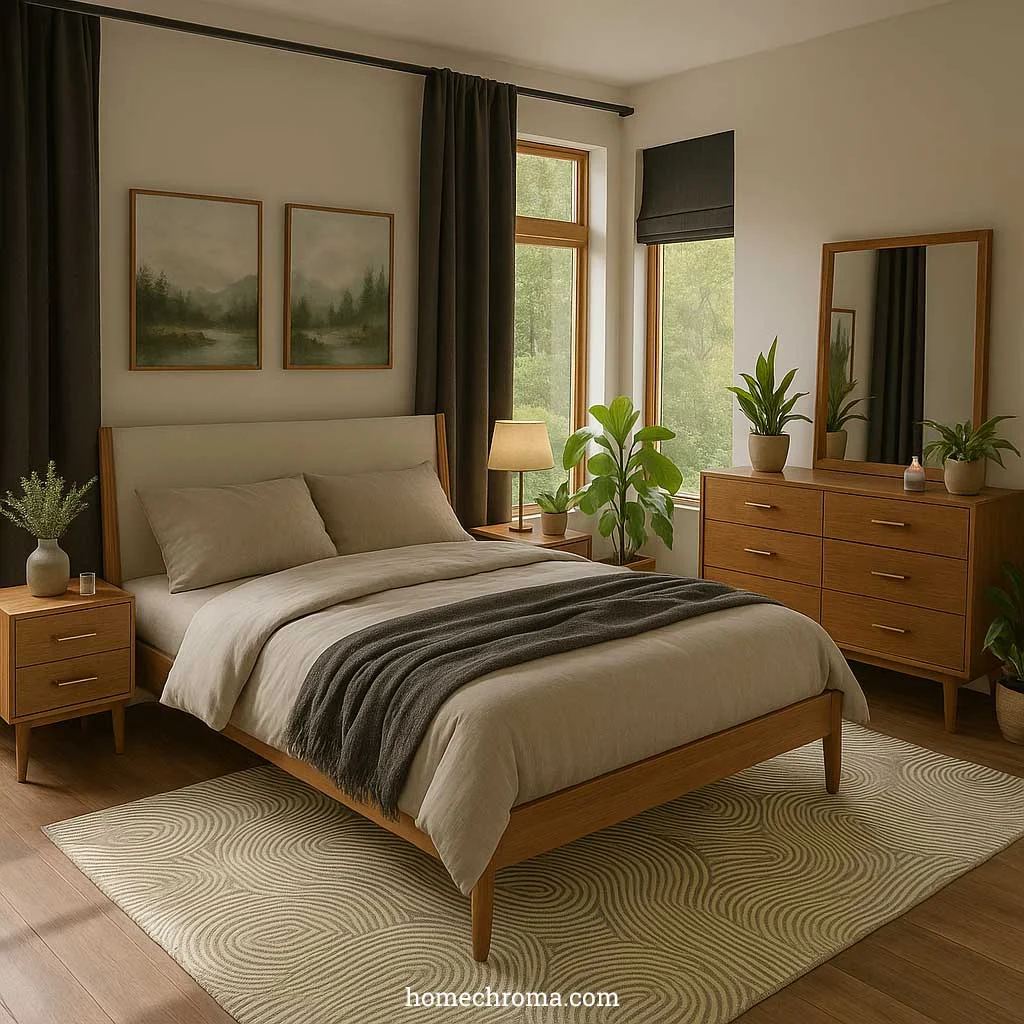
- Ensure complete darkness at night but maximize morning light
- Choose natural bedding materials like linen, cotton, or wool
- Add calming natural scents like lavender
- Install nature soundscapes for sleep
- Display calming nature artwork
Home Office
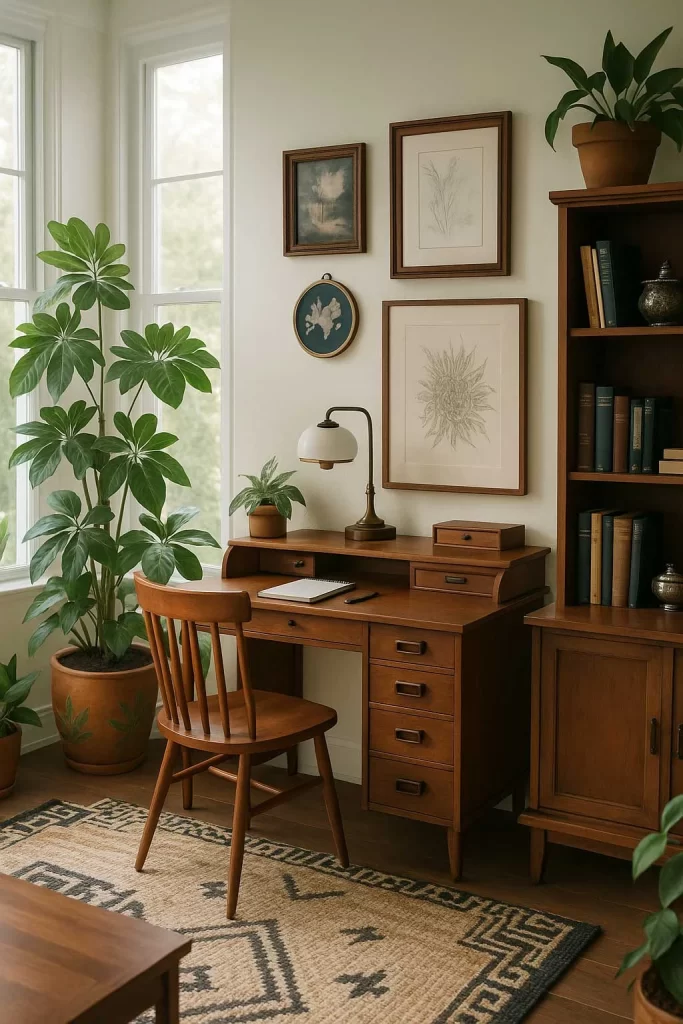
- Position desk near windows with natural views
- Add air-purifying plants like snake plants or peace lilies
- Use wooden desk and natural materials
- Incorporate nature sounds that enhance focus
- Install full-spectrum lighting that mimics daylight
Bathroom
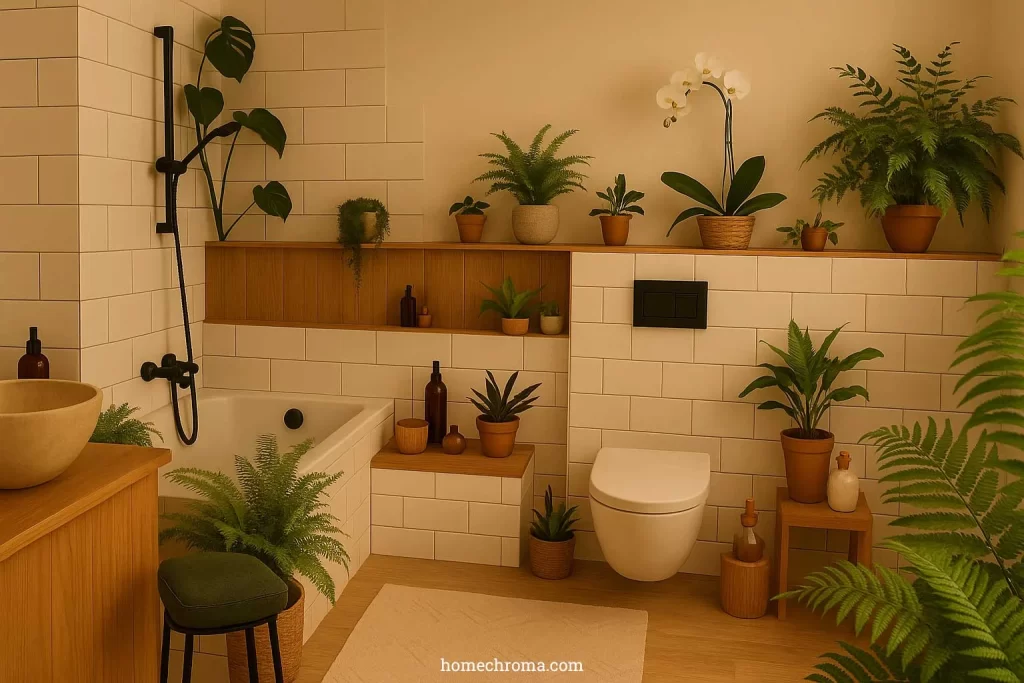
- Add humidity-loving plants like ferns or orchids
- Install a rainfall shower head for natural water sensations
- Use stone, wood, or bamboo accessories
- Add natural scents through essential oils
- Consider a small wall fountain for sound
Practical Implementation Tips
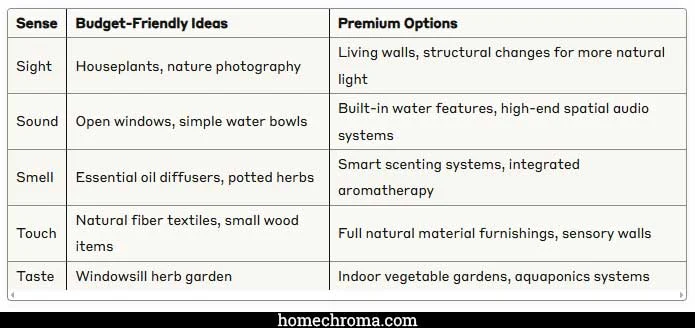
Cost Considerations and Accessibility
Creating an immersive biophilic home doesn’t have to break the bank:
Budget-Friendly Approaches
- Start with one room and gradually expand
- Prioritize elements with multiple sensory benefits (plants provide visual, olfactory, and air-quality benefits)
- Use technology you already own (smartphones can play nature sounds)
- Shop secondhand for natural material furniture
- Grow plants from cuttings or seeds
Mid-Range Investments
- Install smart lighting systems
- Add quality sound systems for nature soundscapes
- Invest in key natural material furniture pieces
- Install small built-in water features
Premium Options
- Structural changes to increase natural light
- Custom living walls or large indoor water features
- High-end VR/AR systems for immersive experiences
- Integrated smart home biophilic systems
Potential Challenges
- Some biophilic elements require maintenance (plants need care, water features need cleaning)
- Allergies may limit certain plant choices or essential oils
- Rental properties may restrict structural changes
- Effectiveness depends on consistent engagement
The Future of Home Wellness
As technology advances, the possibilities for immersive biophilic experiences at home will only expand. We’re already seeing innovations like smart glass that can transform from transparent to displaying nature scenes, AI-driven systems that adjust biophilic elements based on your stress levels, and immersive sensory rooms that provide complete natural environments.
Conclusion
Creating an immersive multi-sensory biophilic home isn’t just about following design trends—it’s about recognizing and honoring our biological connection to nature. By thoughtfully engaging all five senses through natural elements and nature-inspired technology, you can transform your living space into a wellness sanctuary that supports your physical, mental, and emotional health.
The most powerful biophilic experiences combine multiple sensory elements in harmony. A sunny reading nook with natural wood furnishings, the sound of water trickling nearby, the scent of herbs growing on the windowsill, and the feel of natural textiles creates an experience far greater than the sum of its parts.
Your home should be more than just shelter—it should be a place that helps you thrive. By bringing the outside in through immersive biophilic design, you can create a living environment that nurtures wellness naturally, connecting you to the natural world even while indoors.
Dora Decora is a biophilic interior design specialist and passionate blogger. With a deep commitment to integrating nature into living spaces, Dora specializes in creating environments that foster human-nature connections through thoughtful design elements. Her approach emphasizes sustainable materials, natural lighting, and organic patterns that enhance wellbeing and reduce environmental impact.
This post (https://homechroma.com/most-immersive-multi-sensory-biophilic-experiences-for-home-wellness/) was originally published by Dora Decora on Home Chroma. As an Amazon Associates partner, qualifying purchases are compensated.

